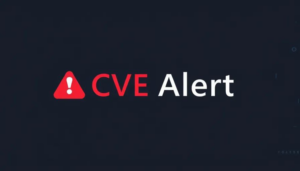CVE Alert: CVE-2025-9527 – Linksys – E1700
CVE-2025-9527
A vulnerability was found in Linksys E1700 1.0.0.4.003. This affects the function QoSSetup of the file /goform/QoSSetup. Performing manipulation of the argument ack_policy results in stack-based buffer overflow. The attack may be initiated remotely. The exploit has been made public and could be used. The vendor was contacted early about this disclosure but did not respond in any way.
AI Summary Analysis
Risk verdict
High risk: remote, low-privilege exploitation is possible with a public PoC, so patching should be prioritised.
Why this matters
The issue enables stack-based memory corruption with full impact on confidentiality, integrity and availability. With consumer routers like the Linksys E1700 being widely deployed in homes and small networks, an attacker could disrupt services, seize control of the device, or pivot to connected hosts.
Most likely attack path
An attacker would reach the QoSSetup endpoint (/goform/QoSSetup) over the network, send crafted data to the ack_policy argument, and trigger a stack overflow. No user interaction is required, and only low privileges are needed, increasing the likelihood of automated attempts. If exploitation succeeds, the attacker could crash or take control of the device, enabling further lateral movement within the local network.
Who is most exposed
Common in residential and small-office deployments, often exposed to the WAN or inadequately restricted management interfaces. Enterprises with legacy home-network gear or misconfigured remote management are particularly at risk.
Detection ideas
- Unexpected router reboots or memory crash logs tied to QoSSetup.
- Anomalous or oversized requests to /goform/QoSSetup, especially with crafted ack_policy values.
- Elevated CPU or memory usage correlating with remote management traffic.
- Indicators of attempted exploitation in network firewall/IDS logs targeting the QoS endpoint.
Mitigation and prioritisation
- Apply vendor patch or upgrade to the fixed version; verify remediation in staging before production.
- If patching is not possible, disable or tightly restrict remote management and QoSSetup access (block WAN access, enforce ACLs).
- Enable strong network segmentation and monitor for PoC indicators or anomal QoS traffic.
- Review change-management and schedule downtime for firmware update.
- If KEV true or EPSS ≥ 0.5, treat as priority 1.
A considerable amount of time and effort goes into maintaining this website, creating backend automation and creating new features and content for you to make actionable intelligence decisions. Everyone that supports the site helps enable new functionality.
If you like the site, please support us on “Patreon” or “Buy Me A Coffee” using the buttons below
To keep up to date follow us on the below channels.


![Cobalt Strike Beacon Detected - 140[.]143[.]132[.]170:80 4 Cobalt-Strike](https://www.redpacketsecurity.com/wp-content/uploads/2021/11/Cobalt-Strike-300x201.jpg)
